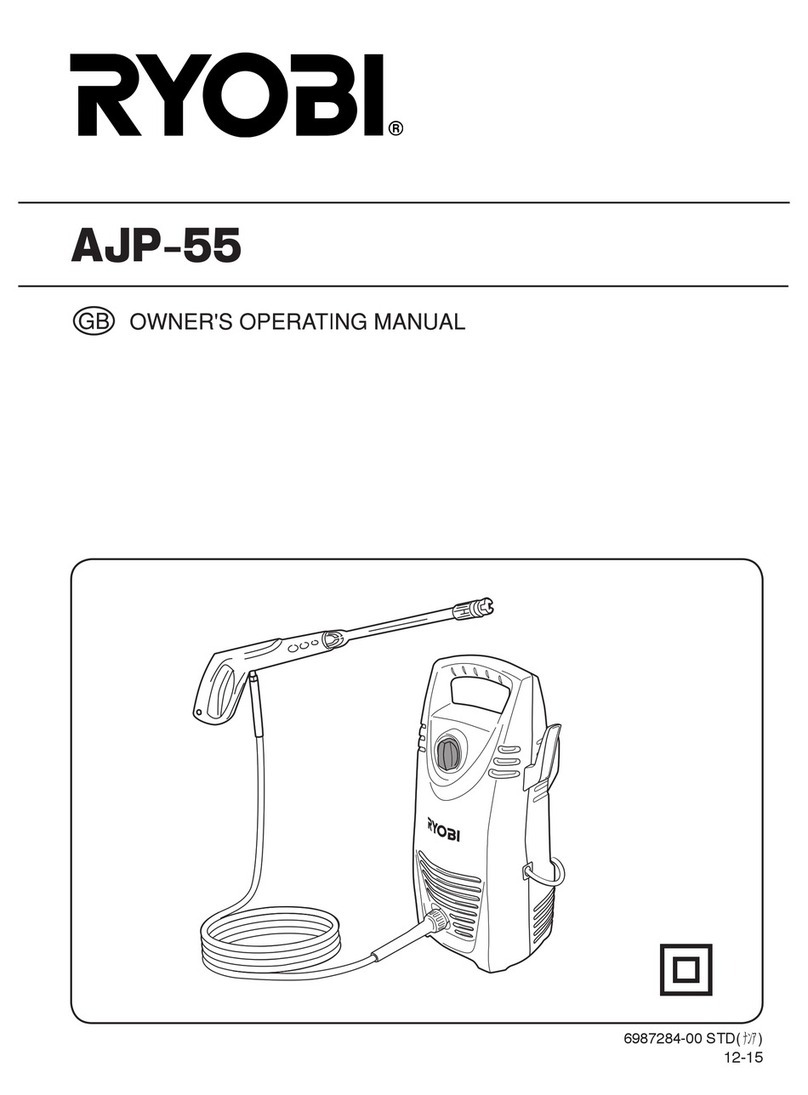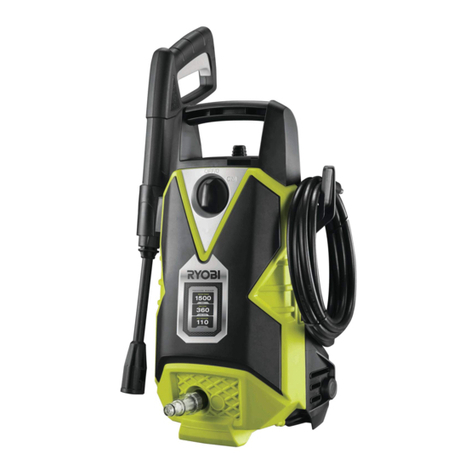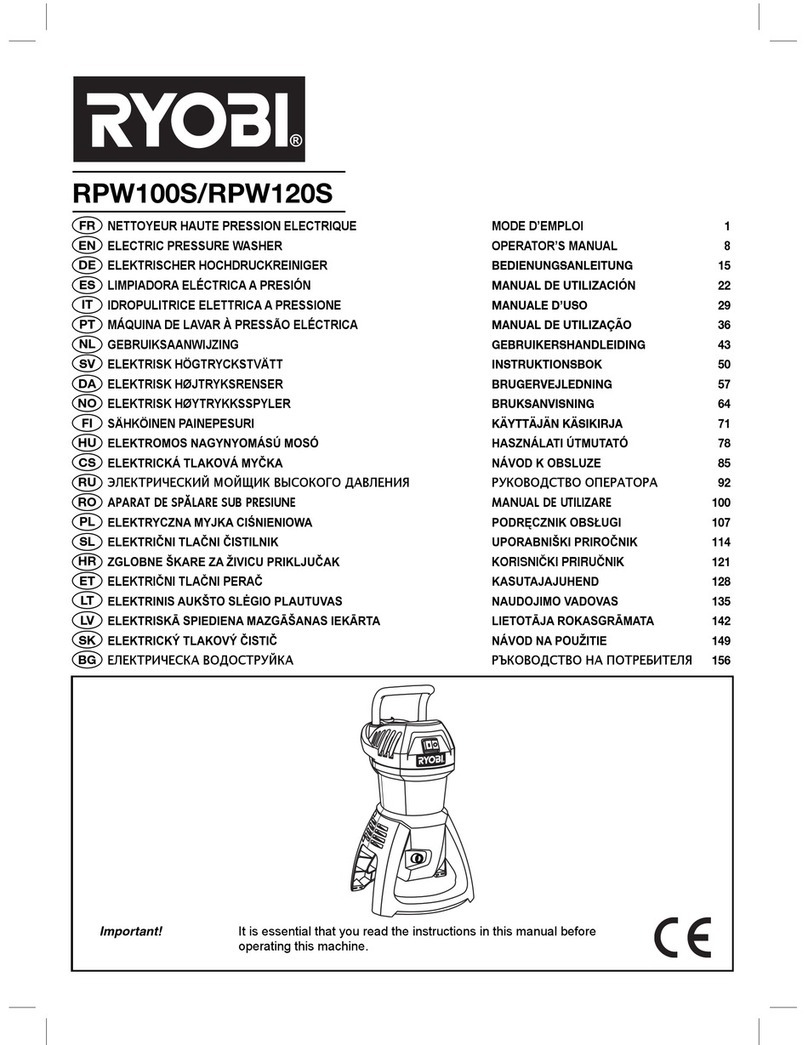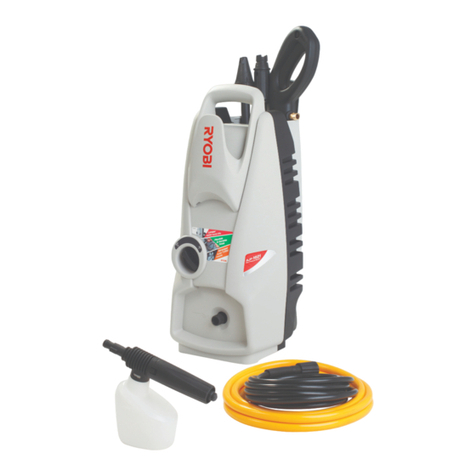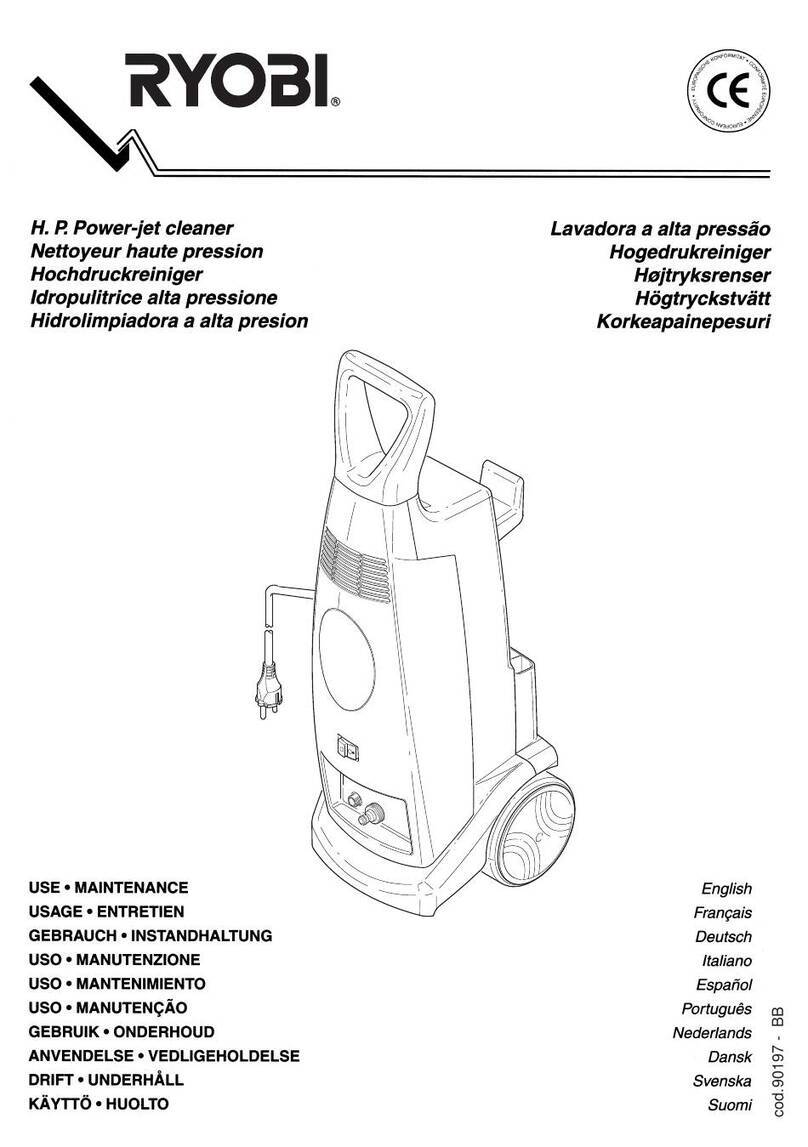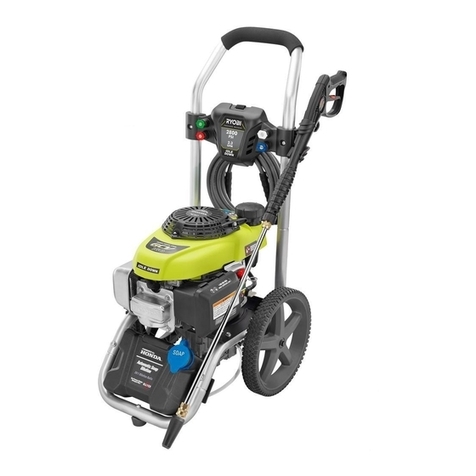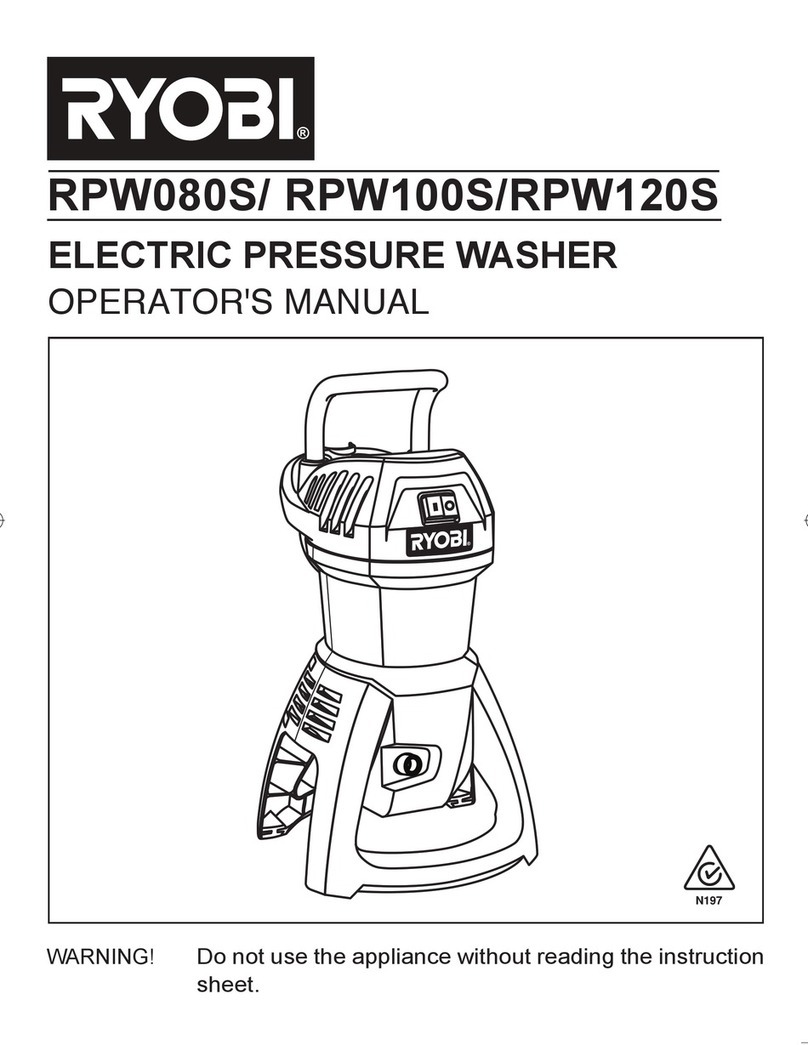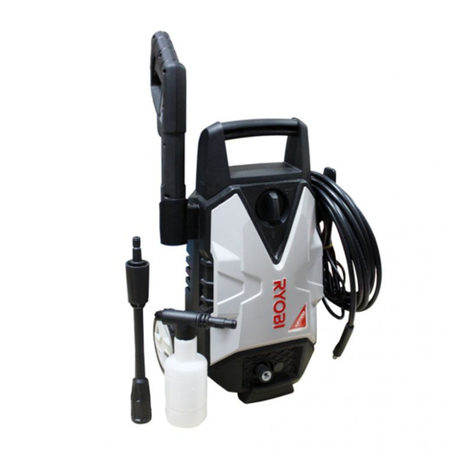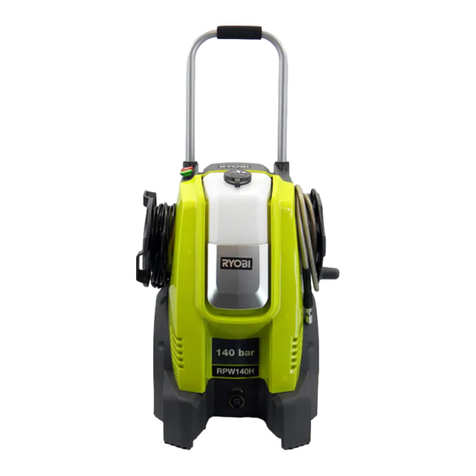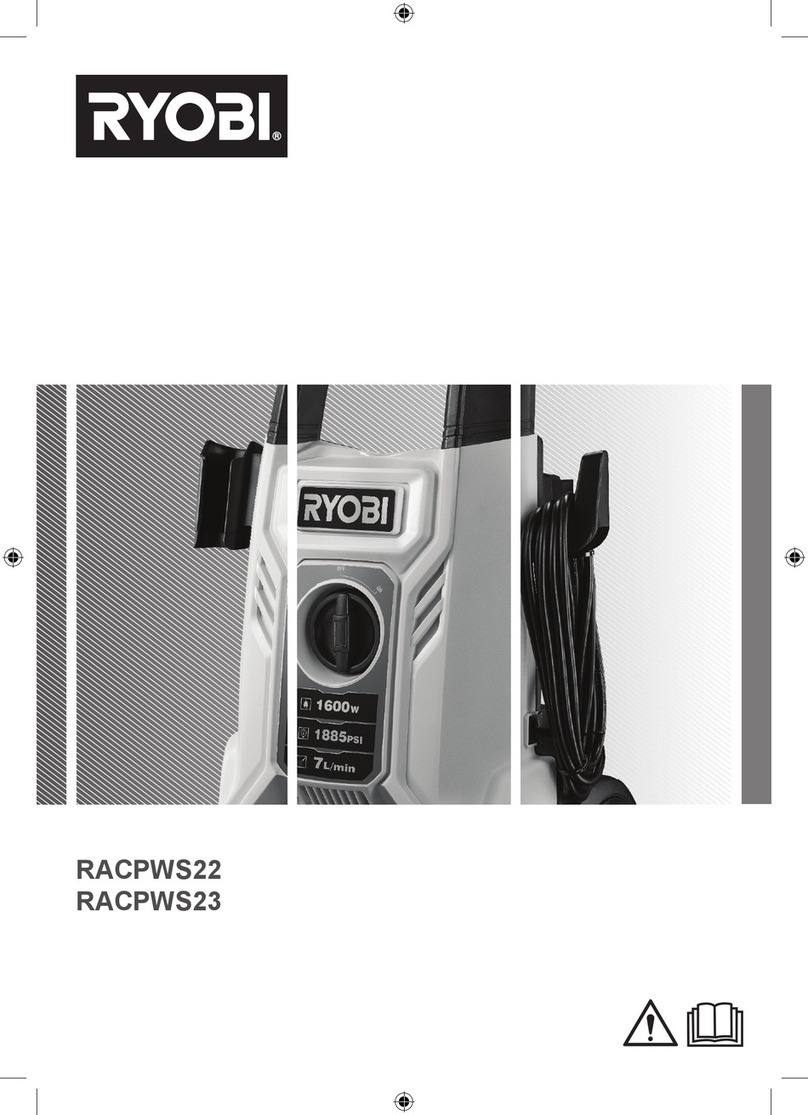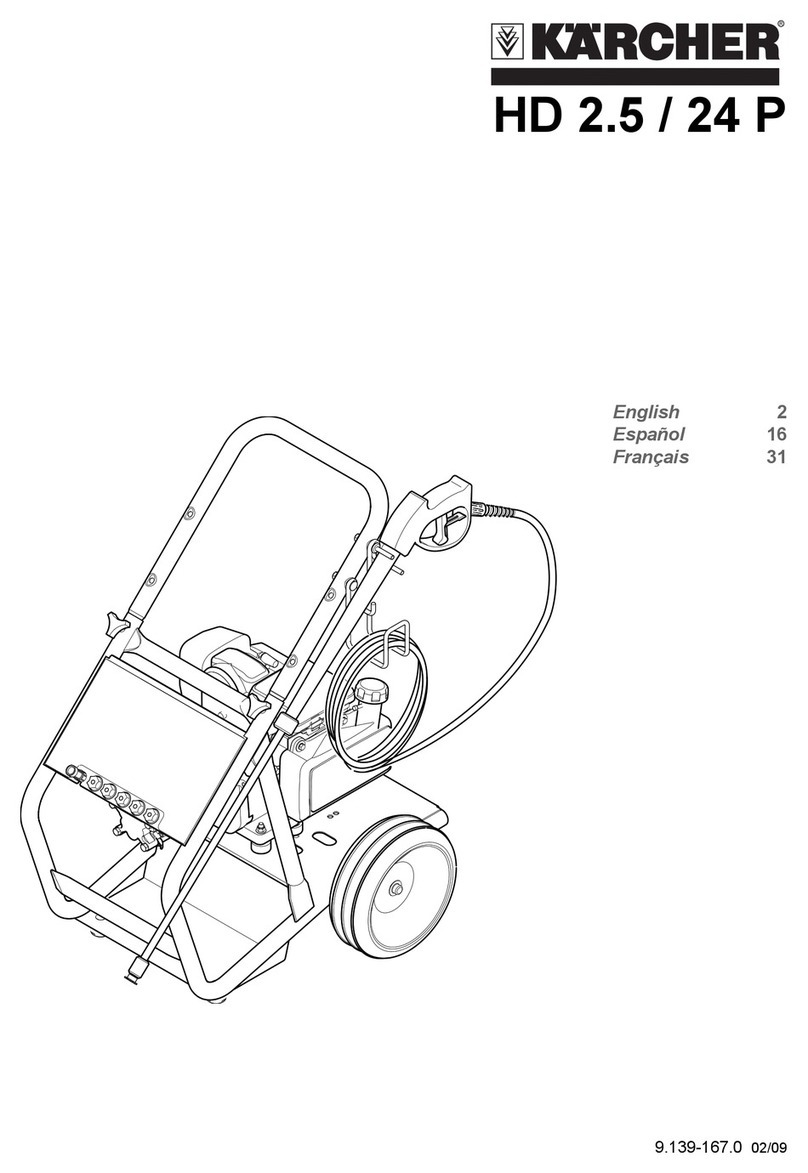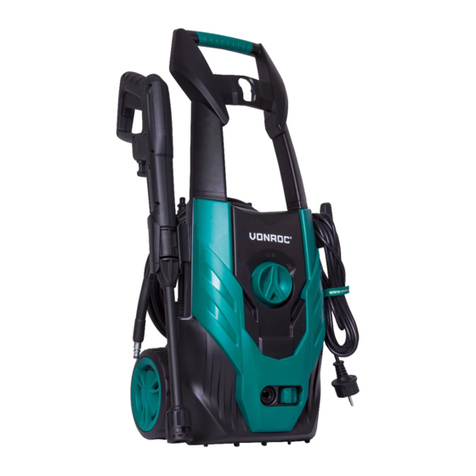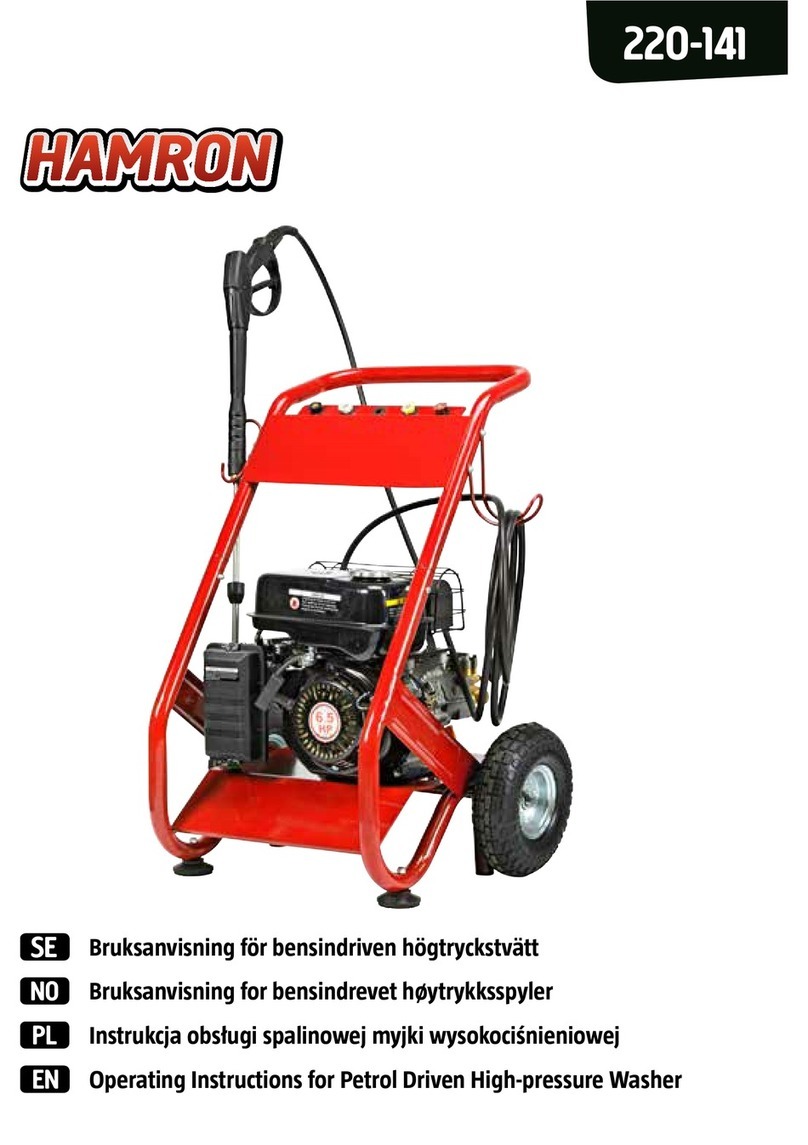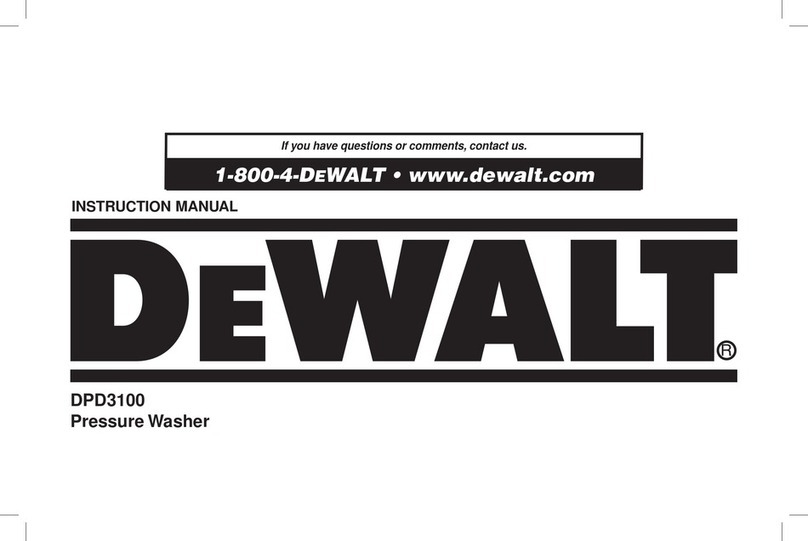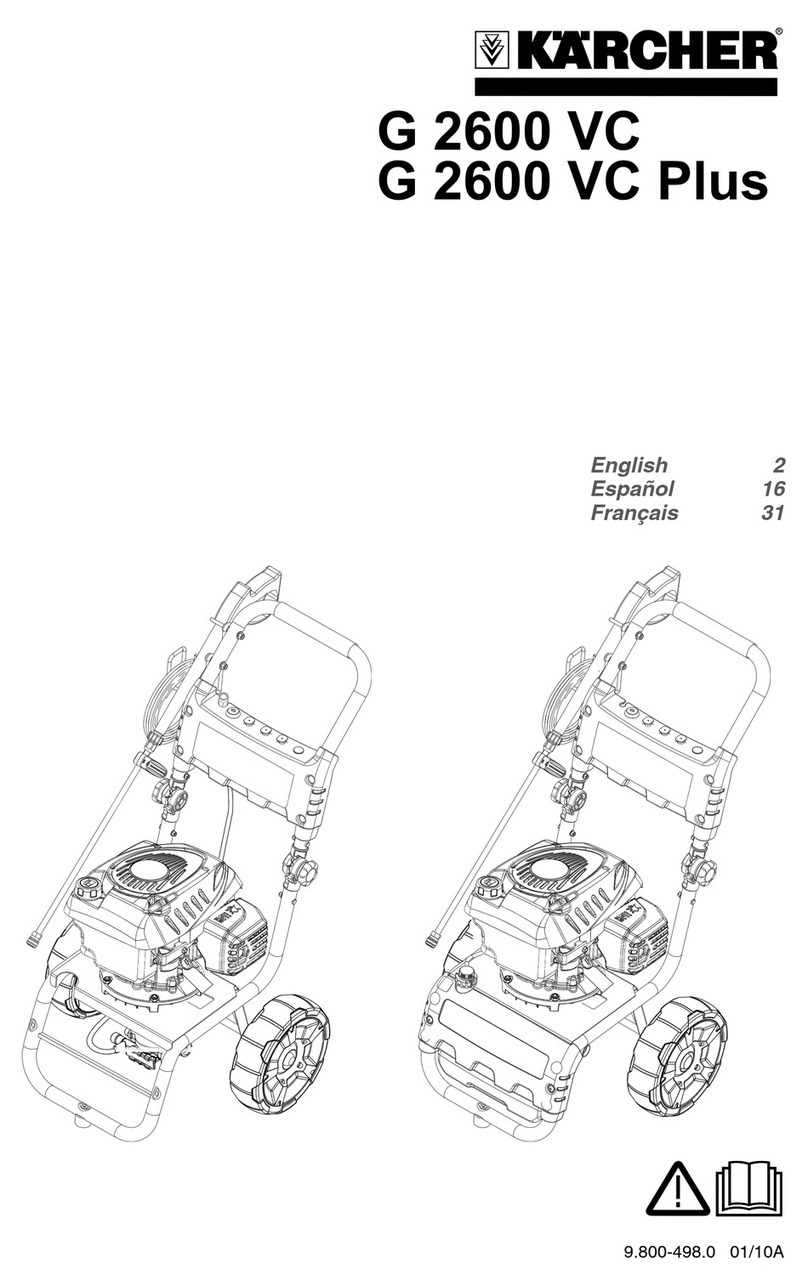
6
• In order to ensure the operational safety of the device,
only use genuine manufacturer’s replacement parts or
parts that have been approved by the manufacturer.
• Do not operate the device if the mains cable or other
important parts of device – e.g. safety related elements,
spray handle hose, spray pistol – are damaged.
• Do not pull or carry the electric tool by its mains cable.
Protect the mains cable from becoming damaged by oil,
solvents and sharp edges.
• Keep your place of work tidy.
• Ensure that the switch is turned off when connecting the
machine to the power supply.
• Wear the suitable work clothes.
• Check your machine to ensure that it is in good working
order. If it is not functioning properly, have it checked by
an RYOBI authorized distributor. Have all maintenance
and inspection work carried out only by RYOBI authorized
distributor.
• The water jet that emerges from the high pressure nozzle
produces a ‘kickback’ on the spray handle. Therefore,
make sure that you have a solid footing and that you have
a rm hold of the handle grip. In order to protect yourself
from possible ying objects (that are released due to the
high pressure).
• The high pressure jet can damage vehicle tyres and tyre
parts. Keep a distance of at least 30 cm from the object
being cleaned.
• If there is a power failure while you are using the machine,
be sure to switch off the machine for safety reasons.
• The electric pump always must be able to draw on a
sufficient supply of water. Dry operation causes severe
damage to the seals.
• Disconnect from the power supply before carrying out
user maintenance.
• Only use genuine spare parts from the manufacturer or
approved by the manufacturer.
• If the supply cord is damaged, it must be replaced by
RYOBI authorized distributor in order to avoid a hazard.
• Never use the machine in an environment where there
could be a danger of explosion. If any doubt arises, please
contact RYOBI authorized distributor.
• It is not allowed to clean asbestos-containing surfaces
with high pressure.
• This machine must not be used at temperatures below
0℃.
• The electric supply connection (for example, connection
the RCD or x wiring) shall be made by a qualied electri-
cian and comply with IEC60364-1: Low-voltage electrical
installations.
Safety devices
Safety lock on spray handle
The spray handle features safety lock button (13). When the
lock is activated, the spray handle cannot be operated.
Motor pump protection
The motor is equipped with a motor circuit breaker switch.
When the motor starts to run hot, it is cut out automatically
by this switch. Switch off the machine. Wait 5 ~ 10 minutes
before using the device again. Try to determine the cause of
the fault. If the problem repeats itself, please contact RYOBI
service centre.
Using cleaning agent
Fill detergent tank with an appropriate cleaning agent, and
the connect the foam nozzle to the spray handle.
Operating instructions
Purpose
The machine is designed to clean vehicles, machines, build-
ings, facades, etc. in the private sector.
Areas of application
• Never use the machine in potentially explosive areas
under any circumstances!
• The operating temperature must be between 0℃ and +40
℃.
• The machine consists of an assembly with a pump, which
is encased in a shock absorbing housing. For an optimal
working position the machine comes with a lance and
a non-slip handle grip, whose shape and configuration
comply with the applicable regulations.
• Do not cover or modify the lance or the spray nozzles in
any way.
• The machine is designed to be used with cold orThe machine is designed to be used with cold or
lukewarm (max. 40℃); higher temperatures can damage
the pump.
• Do not use water that is dirty, gritty or contains anyDo not use water that is dirty, gritty or contains any
chemical products, as these could impair operation and
shorten the life of the machine.
Assembly
※ Tools needed for assembly: Phillips screwdriver, 17mm
wrench
1. Attach the water supply hose to the faucet (Fig. 2)
WARNING! Remove dirt and debris from the faucet and
from the outside and inside of the hose.
Allow the water from the faucet to run for a short time
before attaching the hose.
Dirt or debris entering the unit may cause damage to the
pump.
WARNING! Be sure to use water directly from the water
faucet. Hot water (over 40℃) and water from hot springs
may damage the unit.
Attach the water supply hose (5) to the water faucet with
the hose clamp (10).
Tighten the clamp screw to secure the hose to the faucet.
2. Attaching the hose joint to the water supply hose
(Fig.3,4,5)
Loosen and remove the hose link from the hose joint (9).
Insert the water supply hose (5) through the hose link.
Insert the end of the water supply hose securely into the
connecting portion of the hose joint.
Securely tighten the hose link onto the hose joint by
turning the hose link clockwise.
WARNING! There is a valve attached to the hose joint.
Water will not ow out of the hose until it is attached to
the water connector.
3. Connecting the hose joint to the water connector (Fig.6)
Push the hose joint (9) onto the water connector (8) until
you hear a 'click' sound.
WARNING! Jiggling the water supply hose to the right
or left when attaching may cause water to leak from the
connection area.
Original instruction

